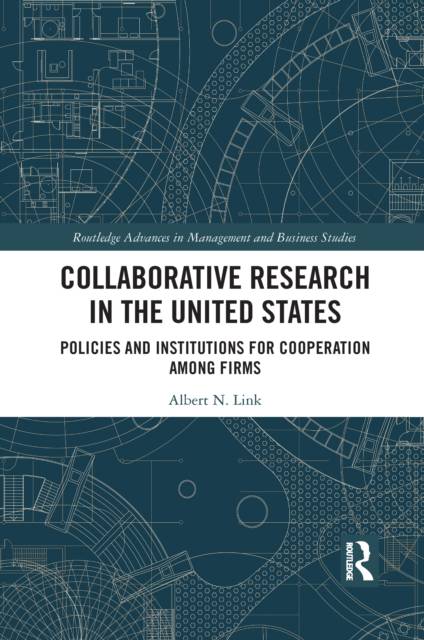
- Afhalen na 1 uur in een winkel met voorraad
- Gratis thuislevering in België vanaf € 30
- Ruim aanbod met 7 miljoen producten
- Afhalen na 1 uur in een winkel met voorraad
- Gratis thuislevering in België vanaf € 30
- Ruim aanbod met 7 miljoen producten
Collaborative Research in the United States
Policies and Institutions for Cooperation Among Firms
Albert N LinkOmschrijving
In order to understand collaborative research activity in the United States, it is important to understand the contextual environment in which firms pursue a collaborative research strategy. The U.S. environment for formal collaborative research was established through a number of policy initiatives promulgated in the 1980s in response to the widespread productivity slowdown throughout industry that began in the early 1970s and then intensified in the late 1970s and early 1980s. These initiatives include the Bayh-Dole Act of 1980, the Stevenson-Wydler Act of 1980 and its amendments, the National Cooperative Research Act of 1984 and its amendments, and the Federal Technology Transfer Act of 1986.
Collaborative Research in the United States offers a critical and retrospective description of collaborative research activity in the United States in an effort to provide a prospective framework for policymakers to evaluate future policy initiatives to encourage such strategic behavior. The analysis that underlies the policy framework draws from the performance of U.S. firms' experiences, presenting a quantitative foundation for recommendations about future policy initiatives. It will be of interest to researchers, academics, policymakers, and students in the fields of critical management studies, strategic management, economics, and public policy.
Specificaties
Betrokkenen
- Auteur(s):
- Uitgeverij:
Inhoud
- Aantal bladzijden:
- 132
- Taal:
- Engels
- Reeks:
Eigenschappen
- Productcode (EAN):
- 9781032085067
- Verschijningsdatum:
- 30/06/2021
- Uitvoering:
- Paperback
- Formaat:
- Trade paperback (VS)
- Afmetingen:
- 150 mm x 226 mm
- Gewicht:
- 113 g

Alleen bij Standaard Boekhandel
Beoordelingen
We publiceren alleen reviews die voldoen aan de voorwaarden voor reviews. Bekijk onze voorwaarden voor reviews.











